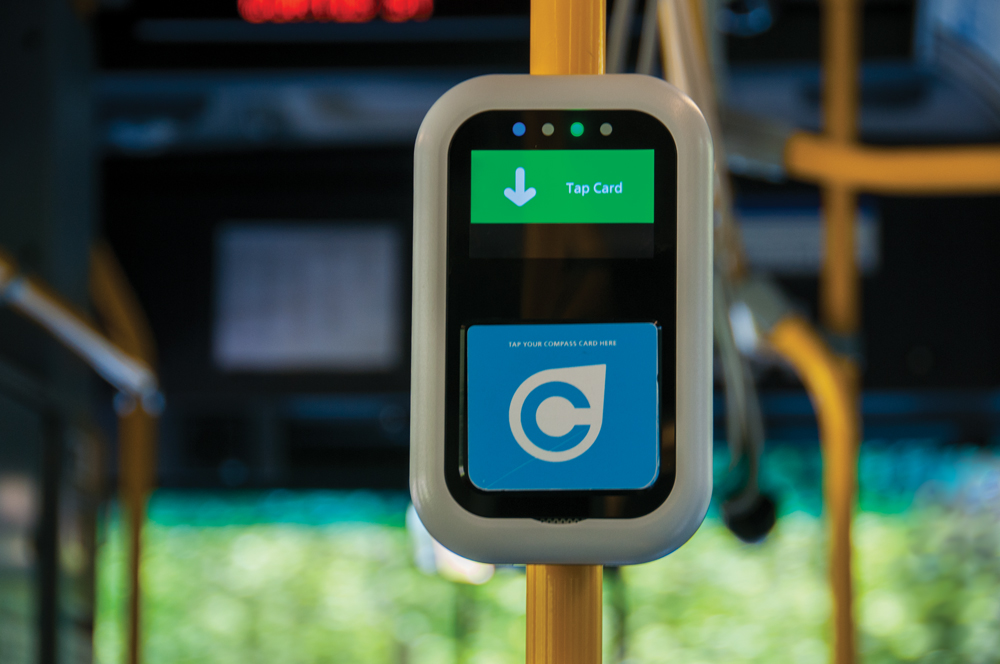“The Compass Card is your new way of travel,” Colleen Brennan, TransLink’s VP of Communications, told The Peak. This June, all SFU students will replace their monthly paper U-Passes with Compass Cards, before the general public has adopted the system.
Brennan explained the reasoning behind a gradual rollout: “It’s a very complicated undertaking to roll out a program like [this] under a very complex system like ours.” Taking into account already existing models from across North America, TransLink has decided that it is best to introduce transit users to the Compass Card in a “staged manner.”
Here are a few key pieces of information SFU students need to know about the transition:
1) Starting May 19, all U-Pass kiosks located on any of the three campuses will stop dispensing paper passes and instead dispense compass cards. The kiosks will be in place until September, after the incoming class has a chance to receive their card.
2) On June 1, the launch goes live and Compass Cards can be used to tap-in and tap-out.
3) All Compass Cards distributed through the U-Pass kiosks have waived the $6 deposit required for purchasing the card. However, after September, students will have to go to fare dealers such as Safeway and London Drugs where they will have to pay a deposit.
4) While students no longer need to visit the kiosk monthly, they must log on to the U-Pass TransLink portal to load a monthly U-Pass on to their card.
5) The process of applying for a U-Pass exemption will be the same as before. However, those applying for an exemption due to receiving a U-Pass from another institution no longer need to provide a copy of their U-Pass. They must instead provide SFU with their card’s serial number.
***
The environmental impact of the transition could be significant, explained Danielle Finney, TransLink’s Senior Communications Advisor for the Compass Project. Said Finney, “That would be 130,000 paper passes that are no longer being shipped by truck to the 10 campuses every month. So it’s not only about a reduction in paper and wood products, but also in greenhouse gas emissions.”
Brennan added that, as opposed to users flashing their passes, the Compass Card’s ability to track card usage could lead to improved transit service. She explained, “One of the beauties of this card and one of the reasons why transit organizations moved to this system is that it does allow us to plan better.
“So, when we are planning our routes [and] planning our system out, we are able to see what the travel patterns are for people. It allows us to optimize our service with respect to that.”
Rella Ng, SFU’s Associate Registrar for Information, Records and Registration Services, noted that, “Right now with flash pass, there is no data on what routes students (or anyone) is taking. Data is the tool to help us with functionality.”
Brennan spoke to the choice of rolling out the Compass Card to students before other groups, noting that students form a quarter of TransLink’s entire customer base. “Students are a really important customer group for us,” said Brennan. “They tend to be more heavy users of transit, they’re more likely to adopt early when it comes to new technology, and they are also are quite happy to give [us] feedback.”
Finney concluded, “We’ve worked really closely with all of the schools to make sure that students get the information they need to make this as seamless as possible.”

